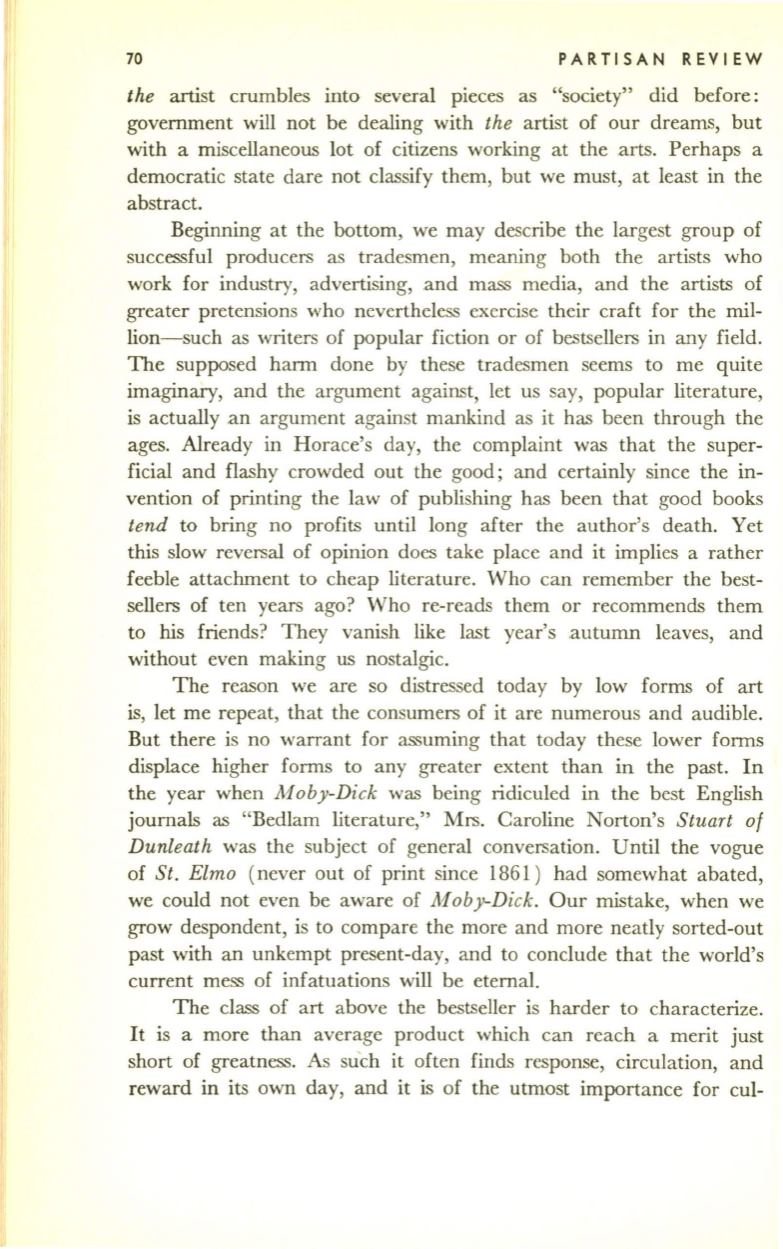
70
PARTISAN REVIEW
the
artist crumbles into several pieces as "society" did before:
government will not be dealing with
the
artist of our dreams, but
with a miscellaneous lot of citizens working at the arts. Perhaps a
democratic state dare not classify them, but we must, at least in the
abstract.
Beginning at the bottom, we may describe the largest group of
successful producers as tradesmen, meaning both the artists who
work for industry, advertising, .and mass media, and the artists of
greater pretensions who nevertheless exercise their craft for the mil–
lion-such as writers of popular fiction or of bestsellers in any field.
The supposed harm done by these tradesmen seems to me quite
imaginary, and the argument against, let us say, popular literature,
is actually an argument against mankind as it has been through the
ages. Already in Horace's day, the complaint was that the super–
ficial and flashy crowded out the good; and certainly since the in–
vention of printing the law of publishing has been that good books
tend
to bring no profits until long after the author's death. Yet
this slow reversal of opinion does take place and it implies a rather
feeble attachment to cheap literature. Who can remember the best–
sellers of ten years ago? Who re-reads them or recommends them
to his friends? They vanish like last year's autumn leaves, and
without even making us nostalgic.
The reason we are so distressed today by low forms of
art
is, let me repeat, that the consumers of it are numerous and audible.
But there is no warrant for assuming that today these lower forms
displace higher forms to any greater extent than in the past. In
the year when
Moby-Dick
was being ridiculed in the best English
journals as "Bedlam literature," Mrs. Caroline Norton's
Stuart of
Dunleath
was the subject of general conversation. Until the vogue
of
St. Elmo
(never out of print since 1861) had somewhat abated,
we could not even be aware of
Mob y-Dick.
Our mistake, when we
grow despondent, is to compare the more and more neatly sorted-out
past with an unkempt present-day, and to conclude that the world's
current mess of infatuations will be eternal.
The class of art above the bestseller is harder to characterize.
It is a more than average product which can reach a merit just
short of greatness. As such it often finds response, circulation, and
reward in its own day, and it
is
of the utmost importance for cul-


